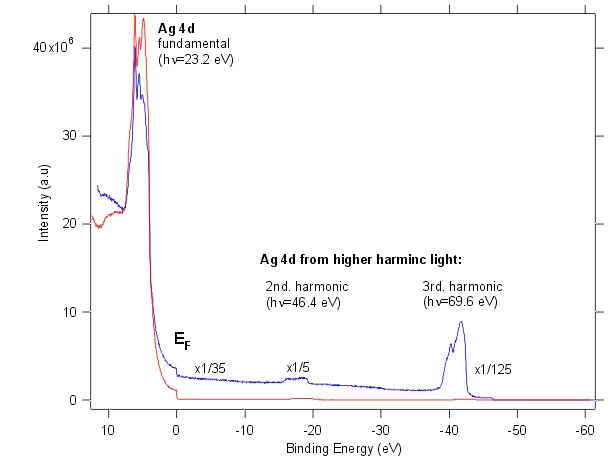The light is produced in an electromagnetic elliptical undulator UE212/424. The emitted light can be linearly (horizontal and vertical) or circularly (left- or right-hand) polarized, or a mixture of both (elliptical) which offers circular light with a smaller degree of polarization at low and high energies where no full circular light can be produced. The period length of the undulator can be increased from 212 mm to 424 mm to provide vertical linear polarization down to 20 eV. In addition, the electromagnetic undulator can be operated in a quasiperiodic scheme for the horizontal polarization to improve the higher order rejection of the whole system.
| Type | EM crossed field undulator |
|---|---|
| Length | 8.4 m |
| Period length | 212 mm and 424 mm |
| Number of poles | 40 |
| Fundamental energy @ max. K | 10 eV |
| Flux @ 20 eV | 2 x 1015 ph/s/0.1%BW |
| Brightness @ 20 eV | 3 x 1017 ph/s/mm2/mrad2/0.1%BW |
| Photon source size @ 10 eV | 256 x 227 mm2(s) |
| Photon source divergence @10 eV | 71 x 65 mrad2(s) |
The UE212/424 undulator is manufactured by Budker Institute of Nuclear Physics in Novosibirsk, Russia. The UE212/424 uses a quasiperiodic scheme for the higher harmonic radiation rejection required for high-resolution photoemission experiments. In this mode, two separate power supplies are used to power the UE212/424, a current of I1 = 60 A and I2 = 72 A, respectively.
This setting provides an amplitude modulation of the magnetic field optimized to reduce the overall harmonic contamination. The harmonic contamination was measured using the photoemission signal of the Ag 4d state. The signal above the Fermi energy (EF) is entirely due to higher order light emitted by the undulator. In the periodic mode (blue) the light from higher harmonics gives an undesirable 4d signal above EF and an important background at EF. With the quasiperiodic mode (red), the higher harmonic signal is suppressed by a factor of more than 125 (for the 3rd harmonic) and the background at EF is reduced by a factor of 35. Using the quasi-periodic mode results in a photon beam of high spectral purity with less than 0.5% higher harmonic contamination.
This setting provides an amplitude modulation of the magnetic field optimized to reduce the overall harmonic contamination. The harmonic contamination was measured using the photoemission signal of the Ag 4d state. The signal above the Fermi energy (EF) is entirely due to higher order light emitted by the undulator. In the periodic mode (blue) the light from higher harmonics gives an undesirable 4d signal above EF and an important background at EF. With the quasiperiodic mode (red), the higher harmonic signal is suppressed by a factor of more than 125 (for the 3rd harmonic) and the background at EF is reduced by a factor of 35. Using the quasi-periodic mode results in a photon beam of high spectral purity with less than 0.5% higher harmonic contamination.
